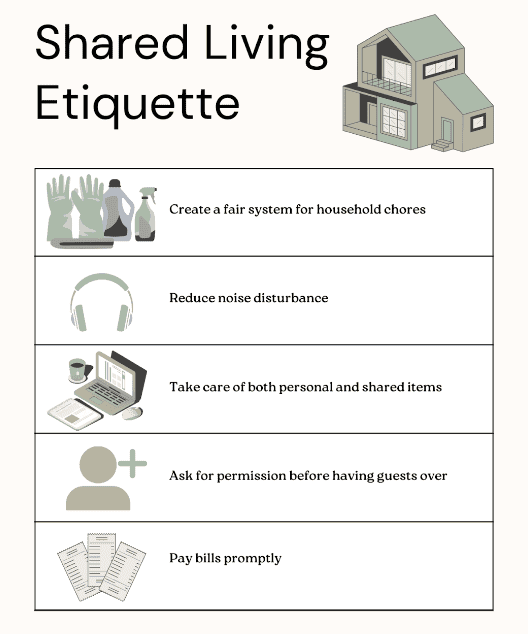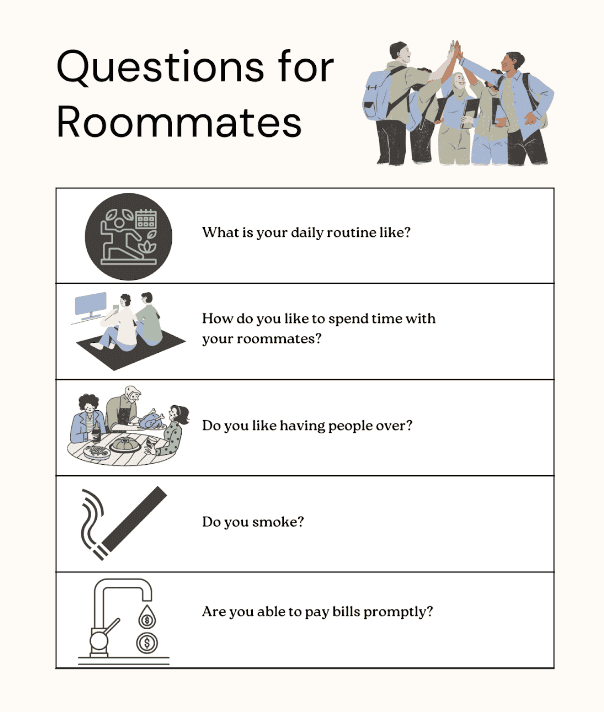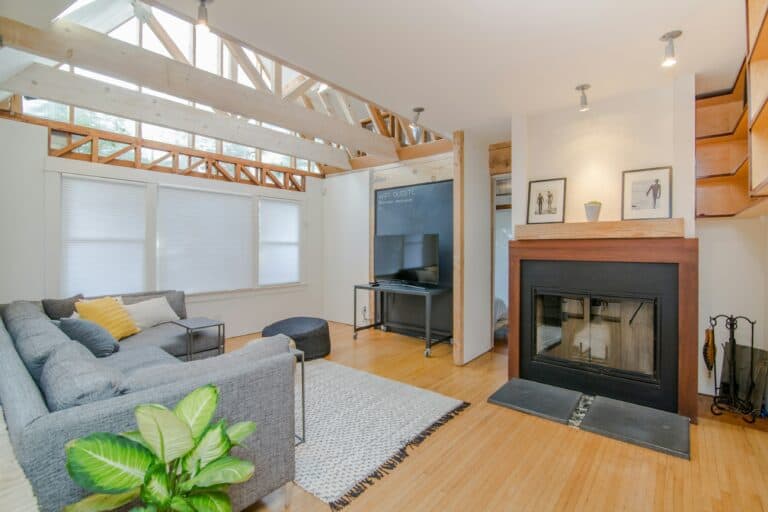A New Era of Living Together
The core of a community is sharing. When people come together in a shared space, they ultimately create social harmony. One of the ways sharing fosters a sense of community is through shared living. Recently, this way of living has become popular among city dwellers and young professionals, mainly because of rising populations, housing costs, and demand for interactions. In this article, we explore how shared living transforms the city life.
The Essence of Shared Living
More than Roommates
By definition, shared living is a setup where people share spaces in a residential property. This could be sharing a living room, kitchen, bathroom, or even a bedroom. Additionally, in some larger shared living buildings, people may live separately and only share outdoor spaces. Shared living can be found in many locations worldwide, and can be found in various different forms.
While shared living is popular now, forming communities has been done for years. Back in the 1960s, people moved in together to create communities. In 1972, people formed the first shared living community in the world. In 1974, there were more than 15,000 shared living communities in Denmark. Nowadays, it continues to rise in popularity. Reports reveal that the global coliving market will grow to $15.9 billion by 2025.
Shared living is all around many locations. In Nagoya, Japan, there is a coliving home called Share House LT Josai. This facility has a triple-level open space where residents gather. The Roam Coliving complex in Bali, Indonesia, lets people rent serviced rooms. It also has shared rooftop and barbecue areas, a pool, and a kitchen. In London, The Collective Old Oak Common includes shared serviced apartments. It also boasts a gym, cinema, spa, laundry, and co-working space. It has 550 bedrooms, making it one of the world’s biggest co-living developments. Based in Barcelona, Spain, ‘A Landing Pad’ is a work by international artists. It has private rooms plus communal areas and working rooms.
A Spectrum of Spaces
More than apartments in the city shared living also has many forms and models. For example, Bali’s Outpost Ubud lets people live and work in paradise. Its Balinese-style bungalows are surrounded by views of the pond and trees. Tenants also enjoy a communal pool, kitchen, and lounge. There are plenty of properties like this in the world. Selina and Ikigai also provide tropical coliving.
Modern technology also enhances shared living. As a pioneering coliving operator, The Citylifer goes beyond accommodation, offering valuable insights and tips on transforming spaces into smart homes, which you can read about in their tips on creating a smart home blog post. To start with the basics, smart locks are for security, while leak sensors prevent damage and water waste. On the other hand, smart lighting and heating ensure comfort and energy efficiency.
Shared living also houses specific groups of people. Places like The Outsite and Hera Hub cater to female entrepreneurs. In The Outsite, rooms are designed to make it easier for women to socialise and collaborate. Also, Hera Hub has spa-like facilities for working and relaxing.
While shared living offers affordability, it can be luxurious, too. For example, Common at The Reserve offers high-end living in Manhattan. It has modern suites complete with keyless entry and laundry. There are also the fitness centre, wellness room, and recreational spaces. Tenants can also enjoy community lounges and the rooftop terrace overlooking the city. Another upscale property is Dash Coliving Argyle in Hong Kong. Its serviced apartments have private bathrooms, custom furniture, and large windows. Dash Living also includes an exclusive leisure tenant’s club.

Why We Share: The Irresistible Allure of Shared Living
Stretching Dollars, Enriching Lives
Shared living provides plenty of economic benefits. Some perks include reduced commuting costs, flexible terms, and cost-efficient spaces. In Seoul, young adults prefer coliving. This is because this setup provides affordability and connections. In blending these two perks, tenants also enjoy shared networks and resources. When people share expenses, they divide their rent, utilities, and grocery costs. Shared resources also help in saving up communal furniture and fixtures. Furthermore, sharing promotes collaboration and even business partnerships. Sustainable living advocate Kristina Hunter emphasizes this too. With more than 25 years in coliving, she highlights how sharing upholds connections and sustainability. In a coliving community, people exchange trade, knowledge, and time. You can ask your neighbours to look after kids or pets, and vice versa.
The Community at Its Core
In the fast-paced modern age, people easily get isolated and lonely. Shared living arrangements help with this by providing social connectivity. In a coliving space, people go from strangers to friends in a community. It helps when operators group like-minded people together. Shared living appeals to a wide range of people, opening up more connections. Some co-living residents come and go, and some stay long. This way, residents create lasting relationships and still meet new people.
In shared living, residents may have a unique bond that they may not have with their family and friends. There is something truly profound in sharing your everyday life with others.
Eco-Friendly by Nature
Through shared living, we also help the environment. Apart from affordable housing, sharing resources promotes sustainability. Examples include carpooling, bulk purchases, and borrowing items. This system of sharing and swapping helps reduce waste and consumption.
Shared living also aids in less use of land. These spaces can house communities in one building instead of separate homes. In shared living, people can live, work, and play all in one place.
Coliving operators design their properties to be more eco-friendly. For example, energy-efficient fixtures like solar panels reduce carbon footprint. Meanwhile, heat retention and air filtration provide clean living. There are also green spaces like sky gardens and lush rooftop terraces that provide a relaxing atmosphere in properties.
Eco Villages Australia is a prime example of sustainable co-living. Its eco-friendly design includes a car-free, walkable village centre where residents can gather. Eco Villages Australia also promotes biodiversity and carpooling.
Navigating the Shared Terrain: Triumphs and Trials
Balancing Acts
Privacy and lack of space are some issues people face in shared living. When these are not addressed, people’s discomfort turns into dissatisfaction. In a previous post, we shared tips for navigating shared living issues. Solutions come from communication, responsibility, and boundaries. But above all, it’s all about fostering a community spirit. Conscious Coliving co-founder Naima von Ritter Figueres emphasizes this.
"If you are looking to get into coliving as a resident, look at what the space offers in terms of community and well-being. From our experience, these two areas are very influential in creating a positive resident experience."
She also shares how sharing daily routines with others leads to meaningful bonds:
"Through casual encounters on a daily basis in the coliving space, we get to geek out on these topics together. Whether we are preparing breakfast, doing some gardening, or lighting up and chilling, we both love to learn from each other! As well as have fun and dance a lot."
Harmony House Rules
In fostering a community in shared living, agreements must be set. Every home has its own system, but there are some general rules to make living together more joyful and less stressful. Here, we like to dive into some tips. To start, create a fair system for chores and responsibilities. Cleaning, grocery shopping, and repairs are tasks you can assign to each other. Also, rotate these chores every once in a while for fairness. Remember that the maintenance of the space is up to those who occupy it. Noise also causes disruption, so keep things at the right volume. Apart from your personal belongings, take care of the shared resources. These items can include kitchen utensils, television sets, and couches. If you want to invite others, ask for permission from other occupants first as a courtesy. To avoid extra charges and service interruption, pay bills promptly. Avoid late payments by setting reminders for all necessary expenses.

Crafting Your Shared Living Atmosphere
Finding Your Tribe
The shared living concept is popular among young professionals, students, and remote workers. Nevertheless, anyone can choose this living arrangement. After all, shared living is all about people. First, you should find roommates who are compatible with you. Regarding the home, you can get to know their preference for cleanliness and tolerance for noise. Personal matters are worth discussing too. Similarities in hobbies or passion are great signs of compatibility. Examples include dancing, music, sports or even cooking and baking. Also, people at the same life stage may get along easier. This way, you get to support each other and grow together.
Another thing to look out for is how your lifestyles align. Note aspects of everyday living such as hobbies and work shifts. Communication skills are also essential in living with roommates. Being good listeners and communicators helps avoid conflict. Financial stability and responsibility are also vital. In coliving, paying rent and utilities is a group effort. Overall, these aspects are all about mutual respect. If the residents don’t respect each other, they don’t foster a community. We’ve listed questions to ask potential (and current) roommates to get to know them more. Answer these questions too, to see how you would fit into a shared community.

The Art of Coexistence
Fostering a community takes time, as does getting along with others. For stronger connections, take the initiative to get to know fellow tenants. For example, schedule movie or game nights on weekends with them. Host arts and crafts sessions with your housemates if you feel more creative. Maximize the communal kitchen by baking or cooking meals together.
You can even use this opportunity for professional development. Skills sharing, brainstorming sessions, and projects help you hone skills and expand networks.
Another way to enhance your community is to help others. Volunteering helps improve your relationship with tenants and others’ lives. Try tree-planting projects, cleaning initiatives, and assisting in local shelters.
Living together in a property makes you familiar with each other. However, fostering thriving relationships comes from genuine initiative.
Designing Shared Spaces
Shared living spaces should provide functionality and comfort. Every piece of furniture, design choice, and arrangement should be planned. This setup ensures the tenants’ satisfaction and ease in the space. For the layout, a flowing design helps social connections. Examples include shared hallways as well as an open dining and living space. Multifunctional and multi-purpose furniture are some key solutions to accommodating all tenants’ needs. This applies to sofa beds, extendable tables, and storage ottomans as they provide convenience and flexibility. When it comes to lighting, it plays an important role in the home’s atmosphere. Firstly, ensure the room captures lots of natural light for its health benefits. It boosts vitamin D, lessens depression, and improves sleep! Even the lighting colour tones matter. Warm tones make spaces feel cosy, perfect for a restful evening on the sofa or a cosy dimmed light dining setting in the dining room area. Meanwhile, cool hues increase focus, making them ideal for the kitchen and study.
Visionaries of Shared Living: What's Next?
Tomorrow’s Shared Spaces
In transforming urban living, the shared economy also integrates technology. Experts say that more than two-thirds of homes will have smart devices by 2027. These promote convenience, security, time, and energy efficiency. At its core, smart homes rely on solid internet connection: the Internet powers streaming devices, smart televisions, and cameras. For security, smart doorbells provide notifications and video footage of visitors and deliveries. Another safety feature is a smart lock, which shows you when and who accesses it. It connects to security cameras and other devices via wireless tech as well. Meanwhile, smart lighting can be controlled through a mobile app, making things convenient. Adding the level of comfort are smart thermostats that let you adjust the temperature even outside your home. There are also smart vacuum cleaners, radiator valves, and speakers. Visit our blog post on automated homes for more information about all this technology!
Another form of shared living innovation is modular structures. Modular homes are built offsite using sustainable materials. An example of this is ReHome by architecture studio Cutwork. It has stackable modular units, cutting building time and expenses by 40%. The communal kitchen, rooftop, and laundry areas are for social connection.
There is also College Road by HTA Design in the UK. Its buildings feature 1,725 volumetric modular units. College Road has a 25-story building with 120 affordable homes and a 50-storey building with 817 rental homes. It includes a shared podcast studio, spa, gym, co-working space, and rooftop garden.
The shared living concept and modular design make the perfect combination. After all, the two promote affordability, sustainability, and resource efficiency.

The Global Village
Shared living continues to adapt to societal trends and changes. For instance, hybrid work has increased the number of digital nomads. This has led to more tenants for shared living properties. And as shared living appeals to more people, it varies in locations and types. We’ve shared resort-style, luxury, and technology-driven coliving setups. Shared living also inspires new forms of community through villages. In fostering communities, coliving eases loneliness. A survey by Philippine coliving operator MyTown attests to this. 64% of the tenants agree that living in the community made them less lonely.
Shared living’s diverse models and target market show its bright future. Its impact on urban development also shows promise. Focusing on community, sustainability, and affordability, shared living provides a well-rounded lifestyle. Such potential manifests in the business sector, too. Predictions show that global coliving investments will exceed $20 billion by 2028. Further forecasts also reveal coliving’s popularity in big cities. Data present that about 15% of urban rentals will have coliving setups by 2028.
Conclusion: A Call to Co-Live
In the present time, people live fast-paced, hyper-independent lives. This lifestyle delivers high productivity alongside loneliness. Shared living provides and alternative option by offering connection. Enjoy the convenience and affordability of city life, and come home to your community. Take it from coliving advocate Naima von Ritter Figueres. “I fell more and more in love with coliving as I learned it could be a solution not only to loneliness, but also to the mental health, environmental, and housing crises we are all facing.”
Shared living also promotes sustainability. It lets you live a wholesome new life by improving everyday living. Living for ourselves is fine, but sharing our lives with others is more fulfilling. Ghanaian writer Lailah Gifty Akita said it best: “Share your life with others. You will have a joyful life.”
The Citylifer Perspective
Fostering Safe and Intimate Communities
At The Citylifer, community comes above all else. To foster connections while maintaining a sense of familiarity, we limit each community cluster to a maximum of 25 residents. These clusters share a dedicated “Family Room”—a communal space designed for cooking, dining, watching movies, and more. This arrangement creates a setting where friendships flourish, enhancing residents’ sense of safety and overall satisfaction with their living conditions.
A Balance of Privacy and Community
Recognizing the critical importance of personal space, each resident at The Citylifer enjoys the luxury of their own self-contained studio apartment. These spaces feature a private kitchen and bathroom, combining autonomy with the shared living experience. Further enhancing your comfort, our studios are meticulously designed to optimize storage and functionality. Our innovative “High Five” furniture set transforms your studio into a multifunctional space that can serve as a bedroom, office, walk-in closet, sports area, or entertainment room. Need more storage? Additional options are available within the building.
Cultivating a Cohesive Community through Resident Engagement
We champion the principle of bottom-up facilitation, encouraging residents to take an active role in planning and evolving community events. This aligns activities more closely with the community’s preferences, promoting a sense of ownership and involvement. As communities strengthen, acceptance and social cohesion naturally follow, making it easier to navigate challenges and resolve conflicts swiftly.
FAQ
Shared living is when people share spaces such as the living, kitchen, or bathroom in a home.
No. Shared living properties are in many places worldwide. Apart from cities, its locations include beaches and rural areas.
Shared living provides affordability, sustainability, and a welcoming community.
They usually involve noise reduction, guest policies, pets, payment schedules, and task distribution like cleaning and taking care of the house together.





